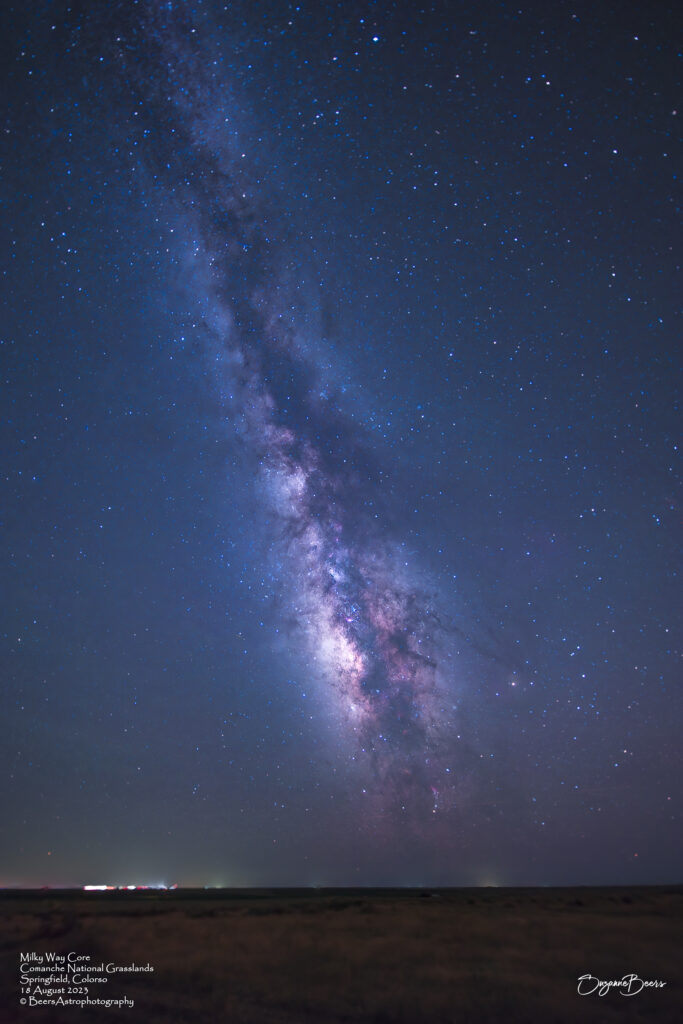
Capture Notes
This years’ time in dark skies has been few and far between…the June trip to Powderhorn BLM land had been the only time to date…making the August trip seem like a “must go.” But yet again, Mother Nature made it difficult with forecasts for thunderstorms, rain, thick clouds at every dark skies location within a 300 mile radius. Finally, the weekend before our planned Thursday departure, we saw a ray of hope…at Comanche National Grassland…but those clear skies came with 100+ degree daytime temperatures! We’ve tried that before and it’s unbearable for man or beast (especially Paul and Zeus!). After many alternative plans, we finally settled on Plan K (as in not Plan A, Plan B, Plan C…) – to stay in a hotel in Springfield, Colorado and drive onto the Grasslands for a night of shooting on Friday. This image was captured from Springfield, Colorado. Specifically, from Comanche National Grasslands public land on a spot about half a mile south of US Hwy 160 off County Road 24.3.
While the Southern Cross was capturing data on IC1396 Elephant Trunk, I set up the Canon EOS Ra on the star tracker to capture the Milky Way. I imaged for about an hour – 2130-2230. (Galactic Center visible 2116 – 0114).
Equipment
Imaging stream: Canon EOS Ra on Sky-Watcher Star Adventurer Star Tracker in sidereal mode. Sigma 14mm 1:1.8 DG lens, manual focus, f2.0.
Sequence Control: Pixel Pro TW-283 N3 Wireless Shutter Remote Control Timer and Shutter Release
Capture & Processing
Sequence plan: Throughout the imaging session, shot 80×60 second exposures at ISO1600, f/2.0
Capture: 18 August 2023
Shooting location: Comanche National Grasslands, County Rd 24.3, Springfield, Colorado
Processing: Brought the raw images into Lightroom. Stacked using Sequator (freeze ground, partial sky) both the full set of 80 images and seven separate groupings by similar “foreground” features. Processed initially in LR (using AW presets and custom mask actions). Exported from LR as a .tif. Removed stars with Starnet++. Opened MW with Stars and Starless in Photoshop as layers to process (reduce stars, sharpen, denoise).
